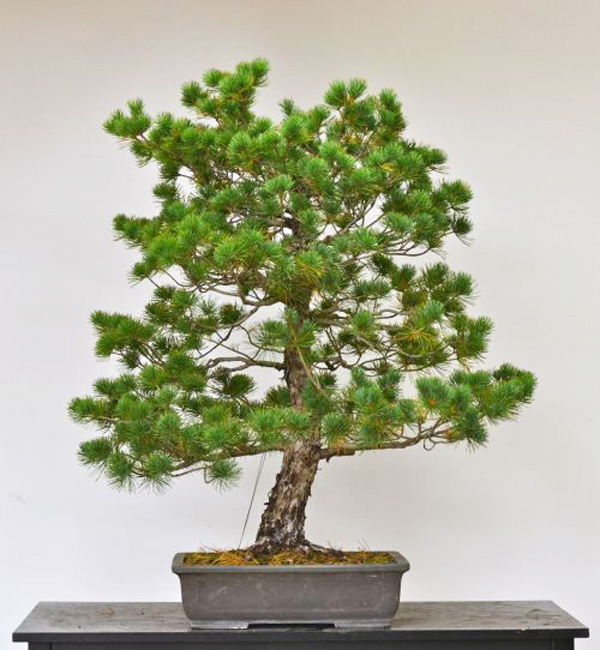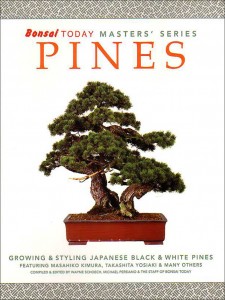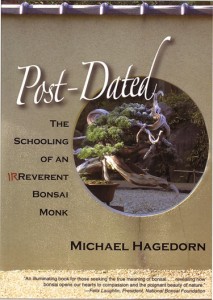 After. Compacting the apex of a Japanese white pine. Borrowed without permission from our friend and teacher, Michael Hagedorn (can you really borrow something without permission?). The before photo is below.
After. Compacting the apex of a Japanese white pine. Borrowed without permission from our friend and teacher, Michael Hagedorn (can you really borrow something without permission?). The before photo is below.
It has been a while since we plundered from Crataegus. It’s the before and after apex that caught my attention (the other photos are just for the fun of it). Reason being, that for many of us, figuring out how to make an apex look like an apex is no mean feat. Maybe this will help.
 A little slice of Crataegus Bonsai. Those doors lead into Michael’s spacious and remarkably clean workshop.
A little slice of Crataegus Bonsai. Those doors lead into Michael’s spacious and remarkably clean workshop.
 We’ve featured this distinctively playful bonsai before, so thought we might as well bring you up to date. While I’m thinking of it, you might notice that there’s no pot. I think Michael likes this no pot idea (there’s another now famous potless bonsai in the photo immediately above).
We’ve featured this distinctively playful bonsai before, so thought we might as well bring you up to date. While I’m thinking of it, you might notice that there’s no pot. I think Michael likes this no pot idea (there’s another now famous potless bonsai in the photo immediately above).
 I think it’s safe to say that Michael has a thing for Chojubai quince (just substitute ‘love’ for ‘grow’ in the following quote to get the real picture): “All four reasons we grow Chojubai in one photo—brilliant flowers, checked bark, idiosyncratic branch patterns, and diminutive leaves.”
I think it’s safe to say that Michael has a thing for Chojubai quince (just substitute ‘love’ for ‘grow’ in the following quote to get the real picture): “All four reasons we grow Chojubai in one photo—brilliant flowers, checked bark, idiosyncratic branch patterns, and diminutive leaves.”
 Here’s that before photo I promised you. You can visit Crataegus Bonsai for the detailed in-between wiring shots (speaking of wire…).
Here’s that before photo I promised you. You can visit Crataegus Bonsai for the detailed in-between wiring shots (speaking of wire…).
Paying the mortgage…. (and just in case you’re wondering, I didn’t set out to do this post so we could advertise these books… just couldn’t pass the opportunity up).
 If you’d really like to dig into Japanese pines (white and black) here’s the book for you.
If you’d really like to dig into Japanese pines (white and black) here’s the book for you.
 Michael’s Post-Dated. Still the best bonsai read around.
Michael’s Post-Dated. Still the best bonsai read around.
Should a bonsai always has apex ?
There are always people asking : “Where is the apex?”….
Hi Robert,
Good question. I guess part of the answer has to do with the definition of apex.